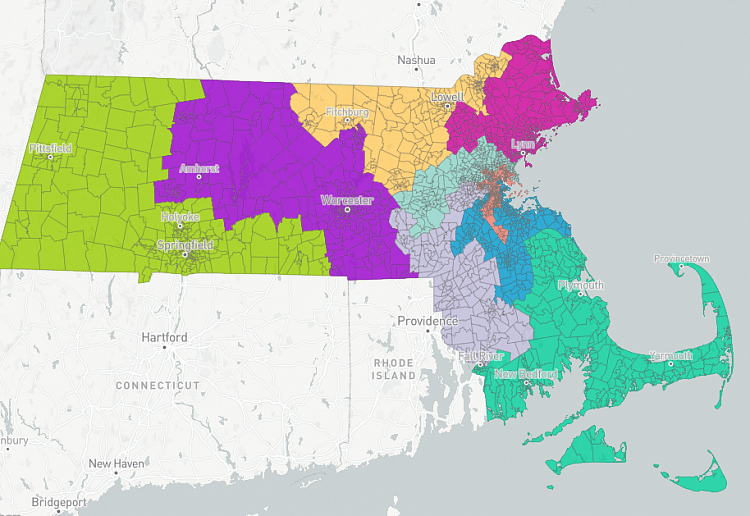One Massachusetts Congressional District Becomes More Republican, The Rest More Democratic

The official ratings are in, and it turns out that the U.S. Congressional districts in Massachusetts lean more towards Democrats than previously thought.
The Cook Political Report released its Partisan Voting Index rankings for each of the 435 Congressional districts in the United States earlier this month — and many of the nine districts in Massachusetts skewed more to Democrats than it did in the 2017 rankings. The figures indicate how many more points the district votes Democratic or Republican compared to the country as a whole. Only one of them turned more GOP than in the 2017 rankings.

